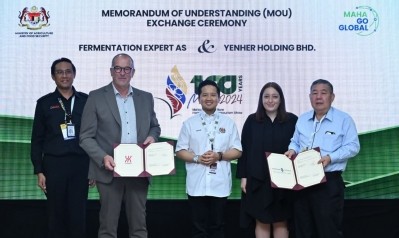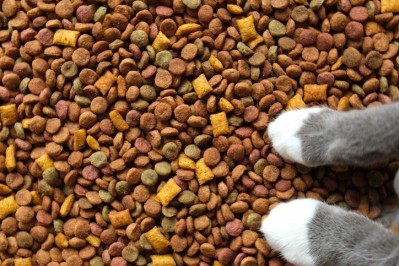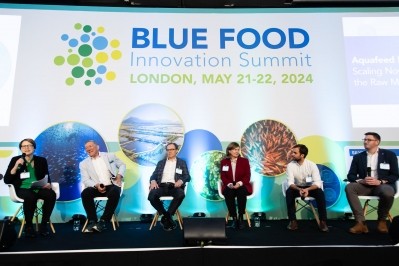From Deep Branch to Aerbio: Rebranding, buyout, and the debut of gas to feed pilot facility

Formerly Deep Branch Biotechnology Ltd, Aerbio has advanced its project to transform industrial CO2 and hydrogen into Proton, a feed protein for salmon and chickens.
The rebranding follows a management buyout of Nottingham-based Deep Branch, with leadership continuing under CEO Kaspar Kristiansen, CTO Rob Mansfield, CXO Peter Rowe, and Chairperson Lars Topholm.
Located at the renowned Brightlands Chemelot Campus in the Netherlands, a hub for circular chemistry and chemical processes, Aerbio's new pilot facility is fully operational after some initial delays. The site is currently producing 200kg of Proton per month, which will be used to support larger feed trials.
Additionally, engineering efforts are underway for a forthcoming demonstration facility with an anticipated production capacity of 25 tons of Proton annually. Beyond animal feed, Aerbio is also exploring opportunities in the food industry, aiming to broaden the applications of its protein product.
Through the conversion of gases using a fermentation system, the (R)evolve technology platform, the production of Proton requires no arable land, and the sites can be deployed wherever industrial processes create food-grade carbon dioxide and hydrogen, maintains Aerbio.
Funding
The company will begin a Series A funding round soon, CXO, Peter Rowe, tells us.
He acknowledges that the fundraising environment over the past few years has been challenging, but he sees the situation evolving. “There's some promising activity in the venture capital world right now, which is great to see. I expect we'll witness several deals coming through, especially in the biotech sector, over the next few weeks.”
The startup is fortunate to have “very supportive” shareholders, he adds.
“The buyout of Deep Branch and the formation of Aerbio was made possible by those shareholders who believe in our vision. They recognize the challenges we've overcome and remain confident in our company and technology. Thanks to their backing, we’ve secured enough capital to get our pilot facility online and fully operational as planned. This will allow us to use its output for application development work while we continue to raise additional funds, primarily to build the demonstration-scale plant we have in the pipeline.”
Aerbio also announced the addition of two seasoned business leaders to its board of directors: Alexander Lacik, CEO of Pandora, and Birgitte Skadhauge, vice president of R&D at the Carlsberg Group.
And the company is continuing to work with a consortium of partners in the UK, including the Sustainable Aquaculture Innovation Centre (SAIC), AB Agri, and BioMar, as part of the REACT-FIRST initiative, which involves collaboration across the whole value chain.
Market applications
Positioning itself as an ingredient supplier, Aerbio is aiming to develop a wide range of applications. The goal is to ensure the team has the flexibility to conduct early product R&D work across a variety of markets:
“Our versatile pilot facility will support this, enabling us to pursue these development activities effectively,” according to Rowe.
Aerbio sees its product more as a replacement for animal protein than plant protein. “If an application is purely based on sustainability, it's certainly interesting for us, but the real value lies in the performance side."
From salmon feed to human nutrition to pet food
One of its four key target markets is aquaculture. “This is our primary focus due to the product's high protein content, balanced amino acid profile, and other features that make it particularly well-suited for this sector.”
Rowe notes an increasing adoption of single-cell proteins in the human food market, which is also an area of strong interest for the company. “This market requires consideration of factors like texture, flavor, and mouthfeel, which involve a different application development process compared to animal nutrition. We have secured a strong partner for this, and we'll be sharing more details soon.”
The innovator is also looking at starter feed application in the monogastric space. “Similar to aquaculture, this market shares nutritional drivers that align well with our product’s strengths,” he explains.
Pet food is an additional segment that the company has set its sights on, specifically for cat and dog nutrition.
“This market sits between human food and performance animal nutrition, like aquaculture, making it another promising area for exploration.
“We aim to eventually have a well-balanced sales portfolio, which includes the ability to tap into and sell to higher-margin markets,” comments the CXO.
Production scale
The plan is to have the demonstration plant online by 2026 and a commercial scale facility operational by 2028.
“The demo facility will allow us to incorporate all the unit operations that will be present at the commercial level, at a relevant size. It will also help us refine the control strategies and daily operations that will define what the full-scale facility will look like.”
The company’s long-term strategy involves establishing regional production sites: "I don’t envision a fully decentralized model with numerous small facilities scattered everywhere. Instead, the goal is to have key regional hubs capable of supplying local markets effectively,” reports Rowe.
Feedstock costs
Aerbio requires CO2, hydrogen, and oxygen for its processes. Those feedstocks are becoming more available and more affordable, he confirms.
“When you look at carbon capture and utilization projects, sourcing high volumes of high-purity CO2, like the food-grade CO2 we use, has become relatively straightforward. However, our main cost sensitivity lies in hydrogen, which is the largest contributor to our cost of goods sold.
“With many 'Power-to-X' projects emerging, you can find locations with abundant, inexpensive renewable energy that can be valorized. This aligns well with our strategy. There are several hydrogen-based technologies entering the market, such as those used in sustainable aviation fuel (SAF) and green ammonia projects. The core principle behind these projects is similar to ours: go where power is cheap and use it to create a highly sustainable product,” remarks Rowe.
















